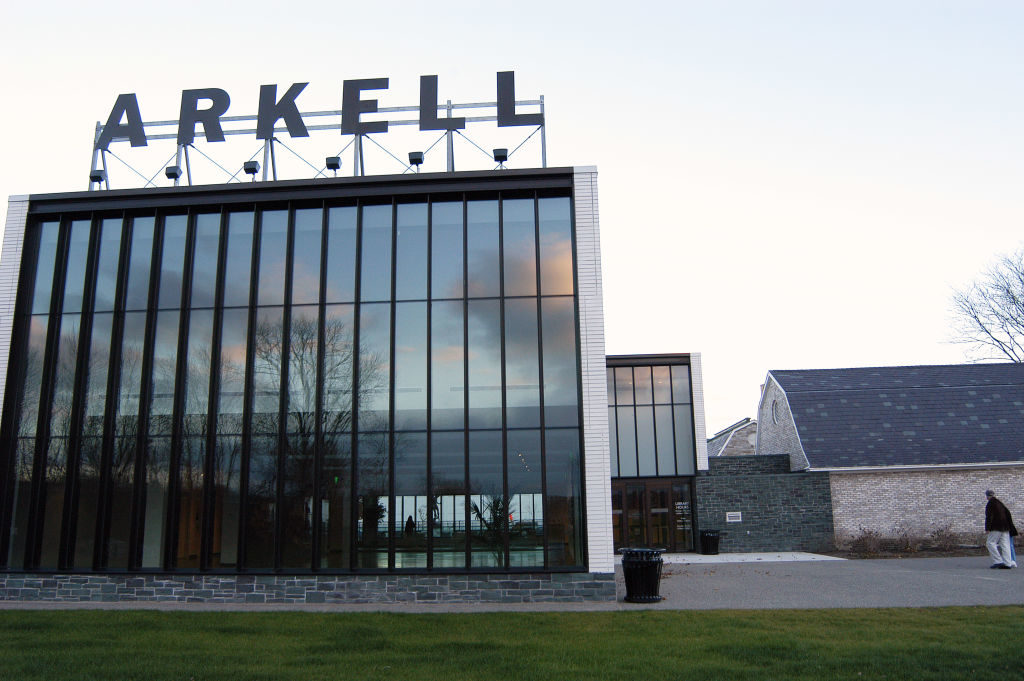Law & Politics
The FBI Has Seized Suspected Nazi-Looted Art From a Little-Known Upstate New York Museum
The painting had been in the collection of prominent German patron Rudolf Mosse.

The painting had been in the collection of prominent German patron Rudolf Mosse.

A painting seized by the Nazis from the collection of a prominent German publisher has been recovered by the FBI. It is the latest work tracked down by researchers hunting for lost works that once belonged to Rudolf Mosse. This one is especially remarkable because it arrived in the US before World War II, after being stolen in the early 1930s along with thousands of works of art from home of a leading member of Berlin’s Jewish community.
The painting was found in the Arkell Museum in Canajoharie, New York. It has been in the US for more than 80 years, arriving soon after Hitler seized power. Authorities learned that Winter, which is also known as Ice Skaters or Snow, had been seized by the Nazis from the Mosse family in 1933. One year later, the US businessman and museum founder Bartlett Arkell bought the work by the US artist Gari Melchers from MacBeth Gallery in New York.
According to federal court documents seen by the Associated Press, the FBI recovered the work on September 10 from the Arkell Museum. The institution’s executive director and chief curator, Suzan D. Friedlander, said in a statement to AP that the museum “was, of course, very upset to learn the history of the painting’s seizure from the Mosse family by the Nazis in 1933.” It immediately waived its right to the work. The painting is now in the custody of the FBI, and is due to be returned to Mosse’s heirs. Friedlander says that she hopes to be present at the return ceremony. “We have been part of making something right, at long last, and take that responsibility very seriously, and to heart,” she tells artnet News.
Rudolf Mosse acquired the work in 1900 at the Great Berlin Art Exhibition. The gouache, which depicts a young couple in a wintery landscape, first entered the German Lost Art Foundation’s database in 2014. According to the database, it was sold at the Nazi collaborator Rudolph Lepke’s auction house in Berlin on May 29, 1934.
Mosse was a successful Berlin-based philanthropist and publisher, who founded the daily liberal newspaper Berlin Tageblatt; his publishing house also produced many books on Modern art and architecture. He left his family a vast art collection on his death in 1920 but when the Nazis came to power the family’s wealth and art was seized, and the newspaper was forced to close.
There are more than 1,000 works of art in the German Lost Art Foundation’s database with a provenance that can be traced back to Mosse, and which are described as having been seized. The nonprofit organization now funds the Mosse Art Research Initiative (MARI), which works to track missing pieces from the collection. Around 100 artists from the Mosse collection are now listed in the Mosse portal, and research has begun on around 115 works of art. The family home in the fashionable Mitte district of Berlin was targeted by the Nazis because it contained antiques and antiquities, rare books, as well as significant paintings and sculptures.
artnet News reached out to the director of investigations working for Mosse research body, who had been tracking the work by on behalf of the German Lost Art Foundation, but did not hear back by publishing time.
The Mosse Art Research Initiative is working to find and recover artworks from the collection that are scattered across the world. It recently identified a stolen painting by the Dutch artist Jozef Israels in the collection of the Tel Aviv Museum of Art. From Darkness to Light (or the Funeral) (1871) is due to be returned to the Mosse heirs but first the museum has organized a display that tells its remarkable history. Also sold at auction by Rudolph Lepke in 1934, it surfaced at auction in London and then in New York in 1993, where it was bought by Max Stein. The Tel Aviv-based art dealer, who was a Holocaust survivor bought it in good faith, as did the eventual donor to the museum in Israel.